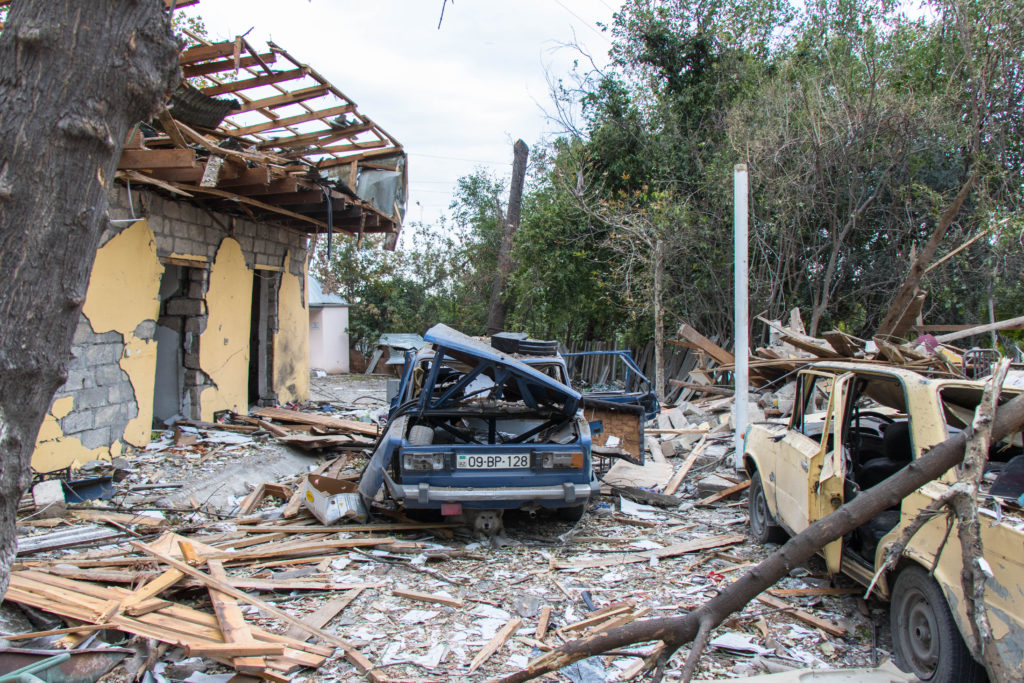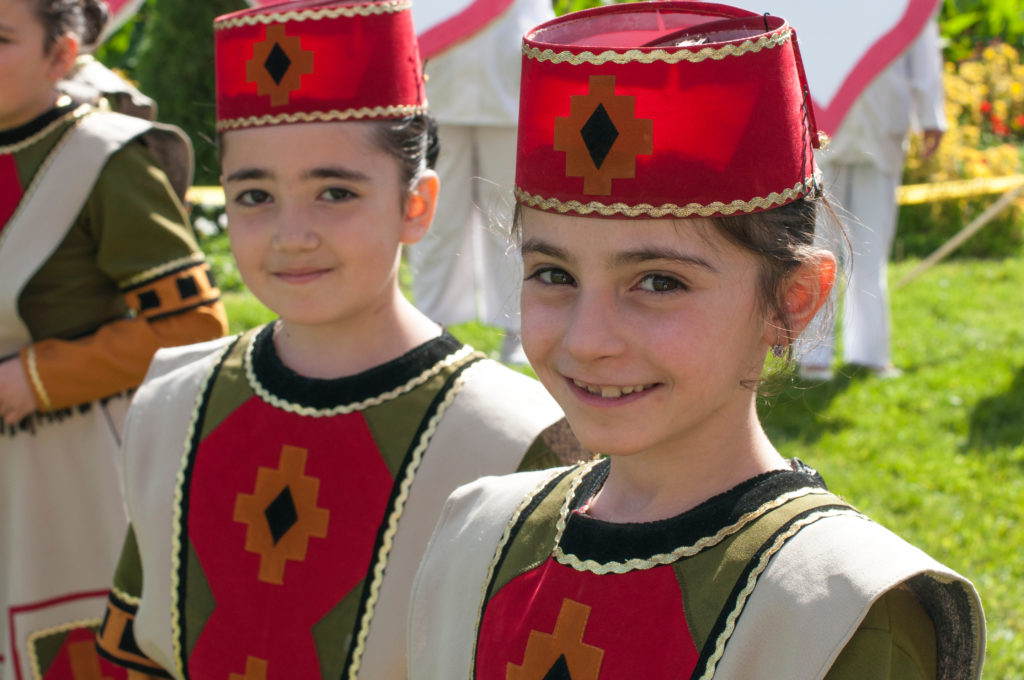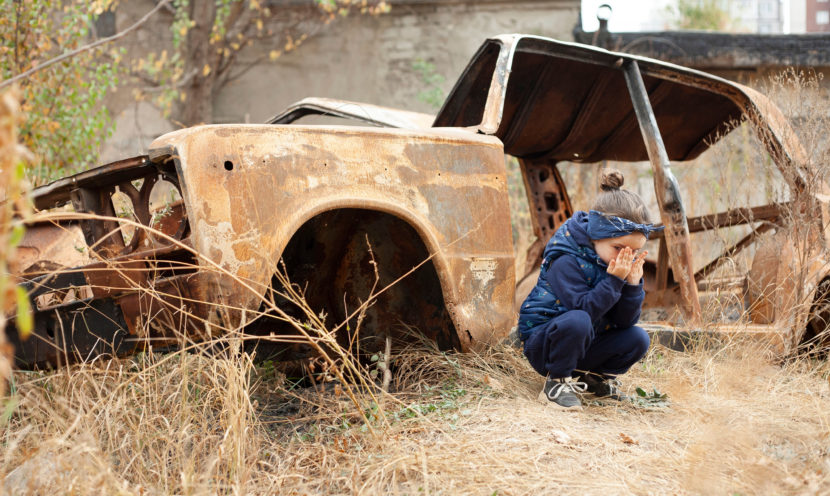Since the early decades of the 20th century, the Nagorno-Karabakh dispute, which turned into a protracted and complex conflict over territory between Armenia and Azerbaijan, has left a lasting impact on generations of children growing up in the region. This enduring conflict, rooted in historical, cultural, and political factors, has exposed young minds to a world filled with uncertainty, displacement, and often trauma. In 2020 and 2023, the region saw renewed escalations, further deepening the challenges of maintaining normalcy and nurturing hope in the lives of these children.
The cycle of conflict
While the origins of the dispute can be traced back to practically 100 years ago, the end of the 20th century was marked by escalations of the conflict. The last years of the 1980s brought increased tensions that turned into a full-scale war, which lasted from 1991 to 1994 (Parliamentary Assembly of the Council of Europe, 2021).
It is reported that around 30,000 people lost their lives from 1988 until the end of the war, and around one million became refugees and displaced persons, relocating to both Azerbaijan and Armenia, depending on the ethnic group they belonged to (Droin et al, 2023).
The children in the region witnessed the horrors of war, and once the war was officially over, they had to cope with its dire consequences. Even almost thirty years after the cease of fire in 1994, many of them still have not returned to their homes, and what is more, have nothing to return to. Some of them were born far away from their families’ homes, and it is possible they will never even see them.
During the following three decades, these children were growing up in a situation that could not be classified either as war or as peace. Those whose families returned to Nagorno-Karabakh after the ceasefire in 1993/1994, continued their lives in a situation filled with uncertainty, poor economic conditions, destroyed infrastructure, and even unremoved landmines (Parliamentary Assembly of the Council of Europe, 2021). Despite the obstacles, they continued their lives, many of them bringing their own children into the world.
However, in September 2020, the situation erupted once again. During a six-week war, at least 91,000 people were displaced, with around 88% of them being women, children, and the elderly (UNHCR, n.d.). Many of these people have gone through the horrors of war when they were children, only to see their children go through the same.
The impact of the 2020 and 2023 conflicts on displaced children
The 2020 war took the lives of at least 146 civilians, including multiple children (Amnesty International, 2021). Survivors were displaced, many of them fleeing to Armenia and staying there indefinitely. Children made up between 32 and 42% of the displaced (Parliamentary Assembly of the Council of Europe, 2021).
The lives of those with nowhere to return have become a constant struggle to leave public shelters behind them and rebuild their lives in a new environment. The biggest obstacles on the way have been the lack of permanent residence and employment for adults, as well as severe social and psychological vulnerability (Parliamentary Assembly of the Council of Europe, 2021).
The outbreak of the COVID-19 pandemic made the situation only worse, contributing to a sense of isolation, preventing children from continuing their education in a regular manner, and keeping them inside with their family members who were carrying the heavy burden of uncertainty and trauma themselves. The health risks associated with the pandemic and living in shelters were an additional threat.
After the end of the 2020 war, the return of displaced people started, including both the Azerbaijani and Armenian populations, depending on the part of Nagorno-Karabakh. However, their efforts to rebuild their lives were shadowed by a constant fear of new escalations.
Those fears proved to be justified, as in September 2023 another outbreak of hostilities happened, lasting for only two days, but causing a massive exodus from Nagorno Karabakh. It is estimated that around 100, 000 people have left the area so far, and there have been no indications of whether they will return or not (UN News, 2023). It is estimated that around 30% of these people are children (ReliefWeb, 2023).
Placing education on the front line

The 2020 war, as well as the preceding one, took a heavy toll on these children’s right to education. According to official records, 71 schools on the Armenian side and 54 Azerbaijani schools were damaged or destroyed during the 2020 war, as well as dozens of kindergartens, arts schools, sports schools, and vocational schools (Human Rights Watch, 2021).
Moreover, many schools were used as temporary shelters for the displaced, which was an additional obstacle on the way to reopening schools and other educational objects and institutions after the ceasefire in November 2020. An obstacle of a different nature was the fact that many parents were simply too afraid to let their children return to school because of frequent ceasefire violations and the proximity of the military troops belonging to the opposite side of the conflict.
The September 2023 escalation made the situation even more dire. Over 21,000 school-aged children fled to Armenia in the aftermath of the conflict, and one month after their harrowing exodus from Nagorno Karabakh, two-thirds of them have been enrolled in national school systems in Armenia.
However, one out of every three of these displaced young individuals still remains without access to education (ReliefWeb, 2023). The prolonged absence of proper schooling not only deprives them of their right to learning but also casts a shadow over their future prospects and the stability of the region as a whole.
Immediate relief and paving the path to a better future
It is of crucial importance to address the most urgent needs of the children affected by the latest escalation of violence in Nagorno-Karabakh. International and humanitarian organizations, as well as individuals, should help provide basic necessities such as food, medicines, and hygiene packages. Providing physical and mental health protection is also vital, as is finding more permanent housing solutions, so the children can continue their lives as normally as possible.
As it empowers young individuals with the knowledge and skills necessary to rebuild their communities, fostering economic stability and social cohesion, education must be seen as a key factor for a better future in the region. By getting access to quality education, Nagorno-Karabakh children of all ethnicities can break the cycle of violence and despair, paving the way for a more peaceful and prosperous tomorrow.

At Humanium, we strongly believe that children are the future of the world and that they deserve to live in peace, regardless of the ethnicity they belong to. Humanium strongly believes in a world where children’s fundamental rights are respected and implemented and is actively involved in projects that promote children’s well-being in different parts of the world. If you share our vision of the world being a safe place for children, we invite you to get involved, whether by donating, volunteering, or sponsoring a child.
Written by Zeljka Mazinjanin
Bibliography:
Amnesty International (2021), Azerbaijan/Armenia: Scores of civilians killed by indiscriminate use of weapons in conflict over Nagorno-Karabakh, Retrieved from Amnesty International, available at https://www.amnesty.org/en/latest/press-release/2021/01/azerbaijan-armenia-scores-of-civilians-killed-by-indiscriminate-use-of-weapons-in-conflict-over-nagorno-karabakh/, accessed on October 25, 2023.
Droin et al (2023), A Renewed Nagorno-Karabakh Conflict: Reading Between the Front Lines. Retrieved from Center for Strategic and International Studies, available at https://www.csis.org/analysis/renewed-nagorno-karabakh-conflict-reading-between-front-lines, accessed on October 25, 2023.
Human Rights Watch (2021), Lessons of War: Attacks on Schools During the Nagorno-Karabakh War. Retrieved from Human Rights Watch, available at https://www.hrw.org/news/2021/09/08/lessons-war, accessed on October 27, 2023.
Parliamentary Assembly of the Council of Europe (2021), Humanitarian consequences of the conflict between Armenia and Azerbaijan. Retrieved from Parliamentary Assembly of the Council of Europe, available at https://assembly.coe.int/nw/xml/XRef/Xref-XML2HTML-en.asp?fileid=29401&lang=en, accessed on October 25, 2023.
ReliefWeb (2023), Over 26,000 children flee Nagorno-Karabakh and need urgent humanitarian assistance – Save the Children. Retrieved from ReliefWeb, available at https://reliefweb.int/report/armenia/over-26000-children-flee-nagorno-karabakh-and-need-urgent-humanitarian-assistance-save-children, accessed on October 27, 2023.
ReliefWeb (2023), Two-thirds of refugee children in Armenia enrolled in school, efforts must now focus on expanding access to education for all children. Retrieved from ReliefWeb, available on https://reliefweb.int/report/armenia/two-thirds-refugee-children-armenia-enrolled-school-efforts-must-now-focus-expanding-access-education-all-children, accessed on November 4, 2023.
UNHCR, n.d., Persons in a refugee-like situation. Retrieved from UNHCR, available at https://www.unhcr.org/am/en/persons-in-refugee-like-situation, accessed on October 25, 2023.
UN News (2023), UN Karabakh mission told ‘sudden’ exodus means as few as 50 ethnic Armenians may remain. Retrieved from United Nations, available at https://news.un.org/en/story/2023/10/1141782, accessed on October 27, 2023.


